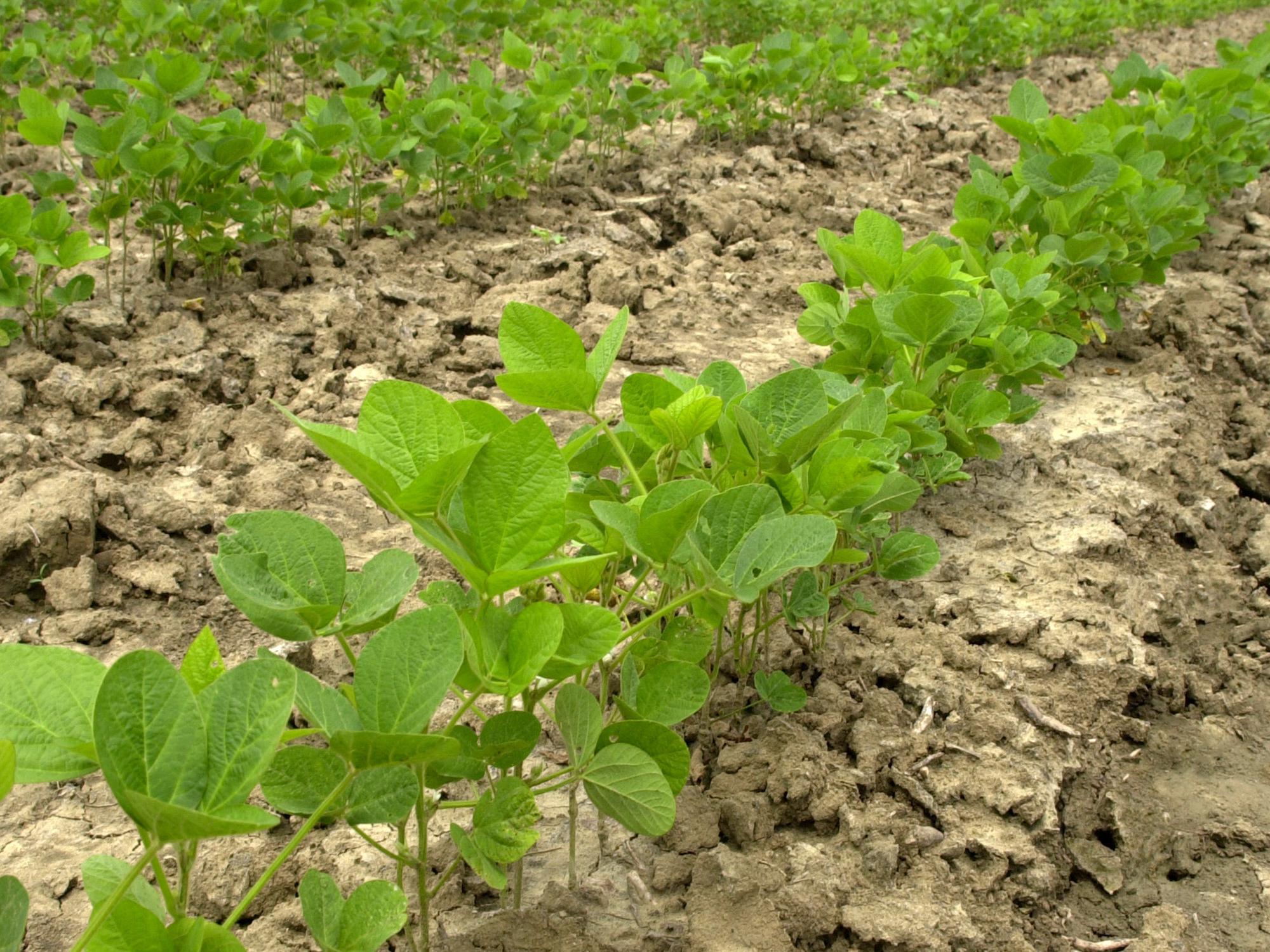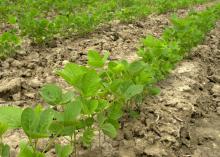Information Possibly Outdated
The information presented on this page was originally released on May 31, 2013. It may not be outdated, but please search our site for more current information. If you plan to quote or reference this information in a publication, please check with the Extension specialist or author before proceeding.
Soybean planting advances as soil conditions improve
MISSISSIPPI STATE – Many Mississippi farmers celebrated Memorial Day in their tractor seats as they took full advantage of about a week of good weather to make significant strides in planting.
A nearly unbroken string of rains kept farmers mostly out of the fields through the early-spring planting window. The U.S. Department of Agriculture’s May 26 Crop Progress and Condition Report shows their efforts to catch up.
Soybeans are 46 percent planted in the state, when normally this crop would be about 88 percent planted. Cotton is still far behind the norm, with just 36 percent of the crop planted rather than the five-year average of 84 percent. Rice planting is farther ahead at 72 percent, compared with the normal 96 percent planted. Corn planting is all but finished.
Trent Irby, soybean specialist with the Mississippi State University Extension Service, said poor conditions also have forced growers to replant some acreage.
“The frequent rains and cooler temperatures forced a number of growers to have to replant this season, making part of an already late crop even later,” Irby said.
Some growers had to pause planting to spray herbicides on soybean fields that had already emerged.
“Windy conditions made it difficult to catch up on herbicide applications,” Irby said. “With only a limited amount of time between rains, making timely herbicide applications has been difficult, especially in areas where producers are battling resistant pigweed.”
Early in the season, Mississippi farmers had been expected to plant about 1.95 million acres of soybeans. Irby said he expects the statewide delay in planting all crops could increase soybean acreage by as much as 10 percent. However, late-planted soybeans face late-season insect and disease problems.
Tom Allen, MSU Extension Service plant pathologist at the Delta Research and Extension Center in Stoneville, said later-planted crops require more vigilance, additional scouting and better management to be successful.
“One of the main reasons we adopted an early soybean production system was to prevent late-season disease issues,” Allen said. “You get to the end of the growing season and often tropical storm systems can delay harvest and bring added moisture, which can increase the incidence of some diseases.”
Soybean rust has become a significant late-season threat in recent years. With funding from the Mississippi Soybean Promotion Board and the United Soybean Promotion Board, MSU has again planted 25 sentinel plots across the state to monitor the arrival of this disease.
“The poor weather prevented us from planting sentinel plots as early as we wanted to, but some are far enough along to have already reached reproductive stages in the southern part of the state,” Allen said.
Last year’s appearance of frogeye leaf spot that is resistant to the fungicide strobilurin may be an even bigger threat than rust.
“We’re going to continually monitor this issue,” Allen said. “Farmers need to be aware of this resistance and know that we are actively monitoring the situation in Mississippi and adjacent states.”
If any growers treat frogeye leaf spot with strobilurin fungicide and the disease appears to worsen, they should send samples of the diseased plants to MSU.
Soybeans are a desirable crop to plant because of their late planting window and good prices. Brian Williams, Extension agricultural economist, said good prices caused some producers to sell stored grain, which prevented prices from climbing quickly, but the late planting date is helping increase soybean prices.
“Old crop July soybeans are currently trading for $15.01 per bushel, while new crop September soybeans are trading for $13.31 per bushel,” Williams said.
The current planting pace for the U.S. soybean crop is at its slowest in 17 years.
“The current slow progress combined with weather reports earlier this week calling for more rain in the northern Corn Belt have caused soybean prices to continue to move upward as fears grow that the crop will not be planted on time,” he said.
MSU specialists offer current crop information on the state’s major row crops at http://www.mississippi-crops.com.




